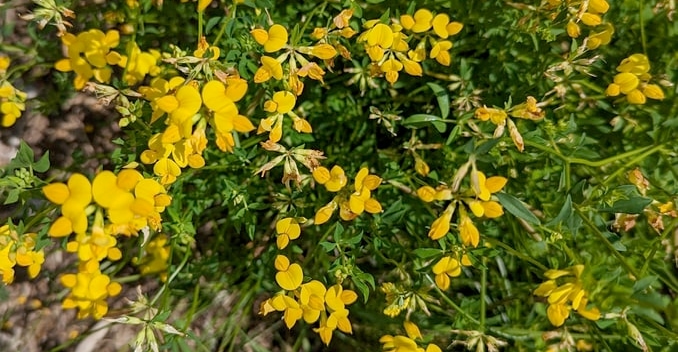 Lately I have been fascinated by plants with ugly names—a few weeks ago it was streptocarpus, better and more euphoniously known as Cape primrose. Right now, as my snapdragons prepare to bloom, it is their plant family, known as the “figwort” family, or Scrophulariaceae.
Lately I have been fascinated by plants with ugly names—a few weeks ago it was streptocarpus, better and more euphoniously known as Cape primrose. Right now, as my snapdragons prepare to bloom, it is their plant family, known as the “figwort” family, or Scrophulariaceae.
Gardeners have long celebrated members of this family, which includes summer bloomers like snapdragons, foxglove, linaria or flax, penstemon, nemesia, and many more. Showy yellow and red calceolaria or “slipper flowers” delight houseplant lovers. Wildflower enthusiasts know the snapdragon-like “butter-and-eggs” and the statuesque verbascum. The same family includes trees like the lovely, fast-growing paulownia.
In his book, Old Possum’s Book of Practical Cats, T.S. Eliot said, “The naming of cats is a serious thing.” So is the naming of plants, though some of the names seem less than serious. “Figwort” literally means “fig plant”. However the figworts have nothing to do with figs, which are part of the genus Moraceae, also the botanical home of mulberry trees.
Go figure.
Scrophulariaceae is derived from “scrofula”, an old name given to a form of tuberculosis that produces swollen lymph nodes on the neck and elsewhere. The botanical name was first used by a French botanist, Antoine Laurent de Jussieu, who lived from 1748 to 1836. De Jussieu, influenced by the great Swedish taxonomist, Linnaeus, was very much into the naming of plants, producing an influential book on the classification of flowering genera.
What about these particular flowering plants made a French botanist think of a serious and disfiguring disease? Some sources assert that plants from the Scrophulariaceae family were, at one time, used to treat scrofula. This may have come about due to belief in the “doctrine of signatures”, an idea that dates to ancient times. According to the doctrine, a plant’s appearance provides clues to its possible uses. A plant like pulmonaria, or lungwort, for example, was thought to be effective in treating lung-related ailments because its speckled leaves resembled human lungs. It was named accordingly.
Many figwort family members feature flowers with five fused petals joined in a “two up, three down” arrangement. The three lower petals form a pouch-like configuration. This swelling may have led to the use of plant parts as a scrofula cure, and also to the Latin name.
Generations of children have taken snapdragon flowers between their fingers and snapped open the “mouths” of the blooms. Due to advances in medical science and the overall decline of folk medicine, those children were and are unenlightened about scrofula. Generations of adults have grown and loved foxgloves, also without knowing anything about either the disease or the doctrine of signatures. It is rather ironic that digitalis or foxglove derivatives have proven effective in the treatment of heart-related ailments—not tuberculosis.
Using the word “scrophulariaceae” in conversation would probably lead to strange looks, but knowing the origin of the name and the characteristics of the flowers can help with plant identification and might come in handy. Imagine a day when you find yourself drawn to an unidentified, summer-flowering plant with pouch-like blooms. As is often the case, there will be no one around to identify the mystery plant. Armed with a little botanical background, you will have the comfort of knowing that it’s likely to be an easy-to-grow figwort.

